Series profile: Fist of the North Star
Realistically, I should not be a fan of Fist of the North Star.
The original manga alternated between high camp and melodrama, a story with no overarching plan, made up as it went along and filled with retcons. The original anime was cheaply produced, loaded with stock scenes and filler, and often hard on the eyes. The spinoffs are all over the place, often wedging in more ingredients than the recipe calls for.
And yet, it is one of my top ten favorite stories to ever come out of Japan. Is it despite all of the above? Is it an unreproducable alchemy that transmutes the flaws into strengths? Is it because I saw it at exactly the right time, before countless imitators turned it into a formula?
All those things and more. It is truly greater than the sum of its parts, a genre-defining touchstone that has reached you whether you know it or not. If you ever brushed up against Street Fighter, Mortal Kombat, Tekken, Final Fantasy, or any of the countless “shonen fighting” anime like Saint Seiya, Jojo’s Bizarre Adventure, or even Dragonball Z, the DNA of Fist of the North Star has entered your bloodstream. It wasn’t even the first martial arts anime series, but nothing was the same after its explosive arrival in 1983.
I adore Fist of the North Star. For every one of its deficits, there is also a treasure. The manga art at its peak is exquisite. Its mythos are unique and propulsive. The characters are engaging and iconic. Its most dramatic moments are transcendent. Patient viewing is generously rewarded. It was a nexus for the top voice actors of the 80s. The theme songs never stop energizing you. And there’s so damn MUCH of it, you can always return to the well for a fresh taste. Those are the hallmarks of a masterpiece, and it’s been around long enough to achieve the mantle of a true classic.
Quick digression as an example: on a 2019 trip to Tokyo, I got myself a bootleg T-shirt of the hero. When I put a jacket over it, only his head peeked out. When I visited a science museum in Nagoya, a 20-something lady behind the gift shop counter eyed it and smiled. “Kenshiro.” Moments like that tell you how far the reach goes.
If you thought 2020 sucked, be glad you didn’t have to live through 199X.
That’s when all the failsafes failed and nuclear hellfire rained down on the Earth, delivering the human race into the Mad Max future. In that world, you’re either predator or prey. Into this maelstrom come men whose destiny was written in the stars, masters of the deadliest fighting styles ever created. The only law is that of the fist; some use theirs to protect the future, others to rule it.
This is the legend of the savior at the end of the century, a man named Kenshiro (who alternately resembles either Bruce Lee or Sylvester Stallone). For better or worse, he was named the sole successor to Hokuto Shinken, the divine fist of the north star. He leads a life of violence and tragedy, bearing unbearable sorrows as he battles one tyrant after another, each more powerful than the last. Waiting at the end of that bloody road is the worst of them all: his big brother Raoh. Think “Thanos” and you won’t be far off.
That’s the shortest description I can muster. To go further would drag you down into a rabbit hole of lore and compromise the joy of discovering it for yourself. Instead, I will provide navigational assistance for the vast world to be found there.
It all started innocently enough in the early 80s, with a fast-rising manga artist named Tetsuo Hara needing a new project, preferably one featuring martial arts. His editor Nobuhiko Horie (of weekly manga magazine Shonen Jump) was looking for a “killer move” as a hook and found one in a Chinese book on acupuncture; the concept of striking pressure points that would cause an opponent’s body to explode! With that single idea as inspiration, Hara created a 100-page revenge story (divided into four parts) of a teenage martial artist named Kenshiro Kasumi fighting a crime syndicate in modern Tokyo with this spectacular ability. This primordial version of Hokuto no Ken was published in a Shonen Jump spinoff in 1983 and scored highly enough with readers to graduate to the main title.
Horie hired a writer with the pen name of Buronson to develop an expanded version of the story, and boy did he ever. Inspired by The Road Warrior and other popular films, he aged the hero up and dropped him into a post-apocalypse setting. Hara took to it instantly, and the two of them went on to create one of the most popular manga titles in history. It debuted in Shonen Jump September 1983 with an opening arc of ten chapters that had readers spellbound. With the series a proven hit, Buronson went into overdrive, expanding and recontextualizing the story with a pantheon of super-powered characters both good and evil. The more he invented, the more Hara stepped up his art style, and the more popular the series became. Next stop, TV.
The Hokuto no Ken anime series arrived in October 1984 and quickly became appointment viewing on Thursday nights. It added new stories to keep from advancing too quickly, turning the first ten chapters into 22 episodes. From there, the show followed the manga almost shot for shot with some occasional filler and recap episodes to keep pace. The biggest moment of the first year was the hotly-anticipated battle between Kenshiro and Raoh, syncing up manga chapter 72 with TV episode 49 in October 1985.
A feature film hit theaters in March 1986 with truly mind-blowing animation (pun intended) that raced through the high points of those 49 episodes in a two hour “remix” that created an alternate story. The manga and TV series forged on with even bigger spectacles that built up to the big rematch. Ultimately, the Ken and Raoh story reached its spectacular conclusion in manga chapter 136 and TV episode 108 (February 1987). But Shonen Jump wasn’t about to let go of its golden goose, so editor Horie pushed Buronson and Hara to continue. They cleared the decks by jumping ahead ten years and lining up a whole new generation of characters to cross Kenshiro’s path.
The TV series added a number 2 to its title and kept right on going without a break. This arc lasted through manga chapter 210 and TV episode 147 (February 1988) at which point the anime version came to a close. There were another 35 manga chapters after this point, comprising three more story arcs, but to this day they remain manga-only. The final chapter was published in August 1988, by which time Fist of the North Star was surrounded by imitators and its creators were ready to move on. But as it turned out, this was only the end of the beginning.
My first TV episode was #6, which turned up randomly in a tape-trade. There was nothing special about it; the villains were insignificant to the bigger picture, but it was a good sampler in terms of a self-contained story. A lot of the episodes in the first arc were like that, and some of them got pretty silly with mutants and vampires and such. There was even one where Kenshiro kicked the crap out of a tank and somehow DROPPED into an open-cockpit helicopter (think about it for a second). However, #6 was the only episode I can remember that had a blood-splatter across the title card, which was just campy enough to make me think this show might be worth following for laughs.
As it turns out, that’s pretty much what was intended; lure viewers in with humor and slowly crank up the drama. It sure worked on me. The more I saw, the more invested I got. When the first arc gave way to the second, one of the most popular characters arrived (Rei) and it was a whole new ballgame. I was lucky enough to see the show basically in order, something you couldn’t always depend on in the haphazard days of VHS collecting. When the expansion of the mythos gave Kenshiro three super-powerful brothers, I was hooked for life. Every arc topped the previous one and built the series up into a vast, sprawling epic.
For me, the most transcendant part of the story comes in the last 30 episodes of “series 1,” the runup to Ken and Raoh’s final showdown. We had come so far since the beginning, it was like that kooky Episode 6 was part of another show. Seldom have I found myself that engaged in the outcome of a story, before or since. This is where the lore and mythos reach their full potential, giving you all the rewards you were waiting for. That’s what cemented the show into my top ten anime forever.
After that, unfortunately, Fist of the North Star 2 could only be a letdown. It drifted back to “kooky Ken” for a while with very low stakes and disposable villains. It leveled up a bit when Ken returned to his homeland of Ashura, where a whole new set of family ties was waiting (if Japanese viewers assumed the show took place in Japan, it would have implied “back to mainland Asia” and the word itself is evocative of demons). Everyone and their brother had a brother, it seemed, including Raoh. It got good, but not enough to transcend itself.
There was a lot of merch for the show, but it was mainly aimed at little kids. This was weird, because the show was so notoriously violent it got blacklisted by the Japanese PTA. That only made it more alluring, proving the point that censorship often has the opposite of its intended effect. There weren’t many books to collect, so I went for the music (which was great) and the manga, which was a revelation. As an artist, the roughness of the animation was always something I had to tolerate. When I finally saw the manga, the explanation became self-evident; they were struggling to capture intricate, highly-detailed art on what must have been an impossible schedule. Once I understood that, the animators got a free pass from then on.
When the TV series ended at 152 episodes, it was too long for a complete VHS release, so only the movie and three “best of” tapes made it into the marketplace. But the manga was always the driving force anyway. Viz Comics managed to start up the first English language edition in 1989, but didn’t get very far (it was also back when everyone was flipping manga to read left to right, which always compromised the experience). The 90s brought a Japanese hardcover edition and a bizarre but forgettable live-action movie. The only thing that marked the actual year 199X was a pair of books that provided the first of many manga retrospectives in encyclopedia form. (There was also a steady patter of figures and video games, but I’m only tracking media here.)
The end of the century had arrived, and the legendary savior was waiting for his cue. That cue came in 2001, which ignited a sustained explosion that is still going as you read this.
It was a whole new prequel manga by Horie and Hara called Fist of the Blue Sky. Set in 1930s Shanghai, it introduced Kenshiro’s ancestor at the peak of his prowess, wielding Hokuto Shinken against various gangsters in a hard-boiled comedy/drama. An English version fizzled out after just four volumes, but the manga ran all the way up to 2010 in Japan. (It also spawned a 2006 anime series that should be watched by no one. Take my word for it.)
Cue #2 arrived from an unexpected direction: pachinko. This game is Japan’s national pasttime, a cross between pinball and slots that rakes in billions of yen every year. Most games tie into one IP or another, and the first FotNS pachinko game in 2002 set off an unending chain reaction. New versions arrive on a regular basis, and they soon became the biggest source of revenue for the franchise – enough for Shonen Jump editor Horie to set up his own company and make FotNS into a full-time job.
Three things happened on the 20th anniversary in 2003: the entire series was released on DVD for the first time in both Japan and America, Horie’s company Raijin made a second attempt to publish the manga in English (in a full color edition that got about a third of the way), and a series of three anime OAVs called New Fist of the North Star. When I first heard about it, I hoped it would finally cover what was left of the manga, but instead it was based on a novel by Buronson set farther in the future. It looked better than the TV series, but felt a bit off due to some CG animation and a new voice actor for Kenshiro. But the music was great and SOME new stuff was way better than NO new stuff. Plus, there was a lot more on the way.
Three years later, everything increased exponentially with a revival series of animated and manga spinoffs that revisited and further expanded the original. Fist of the North Star was always about Raoh as much as it was about Kenshiro, despite the fact that Raoh was off-camera for almost 50 episodes. Some of the new stories gave us a look at what he was up to during that time, enough to make him the title character of two movies and a manga that was later adapted into a 13-episode TV series.
Thanks to careful management by Horie, Buronson, and Hara, the anime produced during this period surpassed all expectations. By 2006, the medium could finally capture the intricate detail of the manga and turn it into a strength. FotNS never looked better, even in the 1986 feature film. The new productions sort of picked up where that film left off (finally), but didn’t drift as far away from manga continuity. Despite the large number of new characters and details, enough of it matched up with the original story to make it all feel authentic. All the voice roles were recast, but this was not a dealbreaker by any means.
The 30th anniversary (2013) was marked by a super-deluxe 18-volume “Ultimate Edition” of the manga with a new 100-page chapter set in the gap between the first and second stories. As I was writing this article, the first volume was published by Viz in a third attempt to penetrate the English speaking world. Hopefully we’ll get all the way to the end with this one. In 2017, a Kindle-style Ereader version was launched via Kickstarter that incredibly reached 4 times its original funding goal in just seven hours. It came out in time for the 30th anniversary (2018) with the entire story in English for the first time, along with the bonus chapter.
This was all part of a healthy new environment for music, video, and book publishing that more than made up for what we didn’t get in the early years (all examined in the categories below). As of this writing, FotNS ranks as the 33rd most lucrative IP in the entire world. As long as the pachinko juggernaut keeps on destroying the competition, Kenshiro’s world will always be there for us.
The current phase of this story is the “Parody Chapter,” which started with a 2010 manga called DD Fist of the North Star. Since we’d all come through the year 199X intact, we could now ask the question, what would all those guys be doing without an apocalypse to tame? Writer/artist Kajio figured they would have to get normal jobs for which they were completely unqualified. The manga first led to an online Flash series, then a brain-bleaching and very, very funny TV series that kicked off another wave.
Since then we’ve gotten a second DD TV series with Ryuuken as a high school principle teaching everyone how to be real men (he is voiced by Kenshiro’s original actor, which is several degrees of meta), another manga called FotNS Strawberry Flavor starring Sauzer, and two more by Hiroshi Kurao. The first follows a hapless recruit into Raoh’s army and the second re-imagines FotNS as a movie shoot.
Of these, only the first DD TV series has made it into English. We’ll have to hope a pathway opens up for the others. If there’s one thing we’ve learned from the whole history of FotNS, tenacity always gets you there in the end.
Watch the series now on VRV here!
LINKS
First opening title, Take Back the Love!
First opening title, song only (upscaled)
First opening title in multiple languages
First end title, Yuria Forever (without credits)
Second opening title, Silent Survivor
FotNS 2 opening title, Tough Boy
All six TV themes back to back
Mad Max Fury Road with first FotNS opening title
Evolution of FotNS videogames, 1986-2018
Opening sequence from Ken’s Rage Playstation game
Wikipedia page on writer Buronson
Wikipedia page on artist Tetsuo Hara
Hokuto Fandom online encyclopedia
Hokuto Destiny Italian fansite
Fist of the North Star Wikipedia page
New Fist of the North Star Wikipedia page
Manga side story Wikipedia page
Manga index page at Anime News Network
Montage of revival anime footage, 2006-2008
Find lots more links on the video and music pages below!
TV Anime Production Staff Roundtable
Published in Our Favorite Fist of the North Star, Takarajima (2003)
The biggest attraction of the anime Fist of the North Star is the heat of the chaos!
Text by Masanori Kadowaki
For about three and a half years, from 1984 to 1988, FotNS dominated the conversation on TV every Thursday night from 7:00 p.m. Behind the scenes of the 152 episodes, there were various dramas that we could not even imagine at the time. The men who fought on the front lines of that stage are now reuniting. It is only now that the secret story of FotNS will be revealed…
Yoshio Takami (Producer)
A producer who has planned various works with the principle of “Animation is half a step ahead of manga!” His representative works include Ikkyu-san and Galaxy Express 999, and he is a close friend of Leiji Matsumoto, Tetsuya Chiba, and the late Osamu Tezuka. Together with Toei Animation, he is responsible for Japan’s anime strategy with an eye on the world.
Toyoo Ashida (Series Director)
Director who specializes in gag-based anime such as Yatterman and Dr. Slump. In FotNS, he demonstrated that violence and gags are two sides of the same coin, and broadened his career. He is currently the president of Studio Live, where he guides and trains future generations in order to develop the Japanese anime industry.
Read more about him here.
Masami Suda (Character Designer)
Character designer on Gatchaman and the Time Bokan series for Tatsunoko, and Sakikage! Otokojuku for Toei. He is good at designing muscular and strong characters. He is still active at the forefront of the Japanese anime industry as a freelancer.
The anime version of Fist of the North Star is born!
Interviewer: First of all, could you tell us how everyone reacted to the idea of making FotNS into an anime?
Takami: It was a time of love comedies like Touch, where the main character was a life-sized familiar friend. There were no outstanding heroes. I had a hard time figuring out how to justify a hero whose signature line was “You’re already dead!” (Laughs)
If you look at the production notes from that time, it started in October 1984. The episode titles were also interesting. Things like, Run, Kenshiro! Another friend is dying! (Episode 66). This story seemed very dated. I thought of it as a period piece, and I stopped thinking realistically. The lines and everything were all over the place.
I was able to find a standard value for production that I didn’t understand at first. I also started to understand the modeling of the characters, the way they appear, the way they are justified, and the way they are created. For example, at the beginning of the first episode, Kenshiro comes out of a dust cloud.
This is a hard-boiled kung fu story, and it goes one episode at a time. The goal is to track down Yuria. It’s also a revenge story about a man who wants to get revenge on the guy who gave him 7 scars. Kenshiro, Lin, and Bat are the key players. It’s a nationless story that doesn’t happen in a specific place. However, there were a lot of violent scenes, so I had to be careful about that. People who get the manga pay for it themselves and read it of their own free will, but now it was going out everywhere on TV. There is always a killing scene, and such gruesome scenes were not shown on TV.
The main character endures and endures, and in the end we try to portray it as something justifiable. Otherwise, we’d have Kenshiro killing people left and right. I tried to create such scenes as a final expression of anger, something not unreasonable. I tried to make it so the protagonist didn’t have to move around a lot to get to that point. In the meantime, I tried to depict the antagonists in detail, and from there the character of the protagonist becomes more defined.
When you feel anger in your whole body, you become as strong as Fudo Myoo, an evil demon, just like Kenshiro. When that happens, the body and muscles change. He is effective against bad guys and rarely smiles, but when he does, his smile is beautiful. It’s all part of period drama, isn’t it?
Ashida: First of all, I was a fan of the original story. It was fascinating and hard-boiled, but at the same time it was a gag manga. I love that strain of poison. I had been working on Dr. Slump for Toei where it was “poop!” all the time, so I’m amazed that I was able to do this. (Laughs)
Interviewer: What was the response after the first episode aired?
Ashida: It was Producer Takami’s job to handle the complaints. (Laughs)
Takami: I didn’t get any complaints at all. But it was voted by the PTA as the number one TV show they didn’t want their kids to watch. I thought that was the best cheer ever.
Suda: I also went to Animation Combination in France, and when I was interviewed there, they asked me what I thought about all the “killing.” I said FotNS was a dangerous work, but conversely, Western anime is also dangerous. People don’t die when they fall from buildings. This isn’t like that, it’s an anime where you feel the pain! That’s how I dodged that question.
Ashida: It was on at 7pm golden time, right? [Children’s hour, before prime time.]
Takami: Fuji TV used to let us do that, didn’t they? (Laughs) They were very adventurous.
Suda: I really enjoyed it.
Behind-the-scenes of the production revealed!
Interviewer: Did they have any opinions or requests about the anime from the side of the original [manga]?
Takami: When we finished the first episode, Buronson came to see it in a screening room. He went out of his way to say, “That’s interesting, I’m relieved!” I was so happy to hear that. Of course, I’m very particular about my own work as an author, so when it came to this anime, I was very worried that it would become an assembly line, and the original author couldn’t do anything about it. He was very worried about that.
In the anime, there are stories that are not in the original work. As I recall, before the first episode aired, we were working on several stories that weren’t based on the original. We had to pad it out because we were running out of time. I showed these to Mr. Horie, the manga editor at the time. I was able to get his OK right away, but it was hard to get the original author’s OK. But after he saw the first episode, he seemed to have an idea of what the anime would be like. After that, it became relatively easy for me to create stories that weren’t based on the original work.
Interviewer: When you make an episode that is not based on an original story, do you have any rules?
Takami: When I started on the anime, they were still working on the manga series. I didn’t want to do anything that would constrain Kenshiro’s way of thinking or living. That’s why I wanted to expand toward the other side. I was thinking mainly of the enemy characters of Nanto Seiken.
Interviewer: There are a lot of interesting original episodes in the anime…
Takami: Yes, as the anime started to take off on its own and rivaled the manga, the influence of TV flowed back toward the original and everything got even better.
Ashida: But the reason the anime is so interesting is because the original work is so good!
Suda: Yes, that’s true.
Ashida: On a different note, if someone else had made FotNS, I would have rewound it and watched it over and over again.
Interviewer: Centered around the part where Kenshiro pokes a hole?
Ashida: And then the bad guy explodes! (Laughs) I’d definitely watch it in slow-motion. That’s what’s makes FotNS so interesting. Oh, yeah, then there’s Kenshiro’s technique for warping the spinal cord and the bad guy breaks into pieces!
Interviewer: That was in Episode 3, when he defeated Kamariki and his club!
Ashida: That was so frustrating. (Laughs) Did it explode in the end?
Suda: I think it exploded at the end.
Ashida: Yeah, because otherwise it wouldn’t be fun or exhilarating, it would just be stressful. (Laughs)
Suda: I think the people who were watching the show were also getting into it, wondering when something would explode! (Laughs)
Ashida: Also, the bad guys get really big, don’t they? Their size is completely different from scene to scene. I really liked Mr. Suda’s stance of, “I don’t care!” (Laughs)
Suda: I had the basic designs for the characters, but I changed everything when they got to the screen, and sometimes it went to extremes.
Ashida: The bad guy in the first episode grabbed Lin’s head!
Suda: As someone who draws, I do my best every time, but there are people who make gags out of it…
Ashida: No, no, as I said before, there was always a gag to go with the violence. There is something there that stimulates the intelligence of human beings. Isn’t it the same with words like “abeshi” and “hidebu”? I think they come out because people can’t pronounce words properly when they die. It would be nice to have an interpreter dictionary! (Laughs) I think that people who like FotNS need to have certain a kind of intelligence. [The words he refers to are gibberish that comes out of a goon’s mouth as his body explodes, sort of speaking in tongues. These nonsense words became a staple of the stoy.]
Interviewer: By the way, when Kenshiro does a special move, a caption like Hokuto Hyakuren Ken appears, doesn’t it? If you watch the anime over time, you can see that the style of the caption is different depending on the episode.
Takami: That kind of thing did happen. At the time, there were about five different animation teams working on the project. We didn’t discuss the typeface of the captions for the special moves. I guess that’s what happened.
Due to production budget constraints, we have to do a recap episode once every few weeks. The pictures all looked different, so I had a hard time putting them together. I ended up forcing the visuals together. (Laughs)
Interviewer: I did notice that the visuals were all different. There are differences in the personalities of the drawing.
Ashida: I think the truth is that each group had fun with it. By the time I realized that I had to create something unified, it was too late. I hadn’t shared the interesting things I did with the rest of the group. And yet, I didn’t want us to imitate each other. That disparate approach is power. This work is not neatly and beautifully put together, is it?
Suda: I also feel that power in this work. The people who made it were competing with each other. It’s fun when you can do it that way. If you look closely, you can see that Kenshiro’s face is also very different over time! (Laughs) It wasn’t so bad at first, but as we competed with each other, there were more and more lines. There were times when most of his face was in shadow…
Ashida: Each animation team competed against each other, right? I decided, “Let’s put in at least one new thing every time!” When a villain is cut down by Rei’s Nanto Seiken, the background picture shifts with the villain’s point of view. I was thinking about how the bad guy would explode when Kenshiro poked him. I was thinking about all that. In short, it evolved. We didn’t make any agreements, but we all evolved in the same way.
Takami: When I think about it now, except for Mr. Suda, we were all young. It’s not like there were that many good artists working on it. (Laughs)
Suda: That was the heat of being on the field. Work was a game. Image-wise, it was like we were trying to visualize what we thought. Everyone was doing it naturally, without having to agree on any details. It was just a lot of fun.
The voice actors who supported
Fist of the North Star!
Interviewer: FotNS has quite a cast of voice actors. Can you tell us about moments at the voice recordings?
Ashida: When Akira Kamiya was recording Ken’s “Atatatatata!” he couldn’t finish it and had to catch his breath. The artists didn’t have to breathe it, but Mr. Kamiya did. Of course, I used it as is! (Laughs)
Takami: I don’t think Mr. Kamiya or any of the other voice actors were decided by chance. There were about ten famous voice actors who were candidates for Kenshiro. Among them, Mr. Kamiya was chosen. After all, he played Kinnikuman before that! (Laughs)
I met Mr. Kamiya for the first time when I was a producer on Babel II. He was wearing a school uniform at the time. As Mr. Ashida said, this work was an image of violence and gags, two sides of the same coin. I guess that’s why Mr. Kamiya was chosen.
Interviewer: Kaneto Shiozawa, who did the voice of Rei, was also popular among female fans. I heard that when Rei died, there was a petition to extend his life…
Takami: It was too late for me to do it by then. (Laughs) We’d made the decision four months before the broadcast.
Ashida: Rei’s fans were equal to Shiozawa’s fans, and many women were Shiozawa fans.
Interviewer: Shigeru Chiba’s next-episode narration is also impressive, isn’t it?
Ashida: That’s a great tone!
Suda: Mr. Chiba is also the voice of the villainous Governor Jacko in FotNS 2, isn’t he?
Takami: If the right people did the right jobs, it would get us to the 152nd episode.
You are Shock!
Interviewer: Mr. Takami, was it your choice to use Crystal King for the first opening title?
Takami: No, but I wanted a heroic theme like that, something that evoked a sense of transience or eternity or something like that. I was looking for something different from the love comedies of the past, something that would make me feel a bit taller. It was quite an experiment.
Ashida: In the music world, there are some one-hit wonders. Hiroshi Madoka, Ginbei Yokohama, and so on. There’s something strange about their behavior. A typical example of this is Crystal King, where one of the guys is a slightly crazy older brother-type, and another one has afro hair. That’s already a gag, isn’t it? That’s why I was hooked! It’s amazing that they chose that. (Laughs)
Takami: There were a lot of recommendations, but Crystal King was the best fit. Their character was weird.
Ashida: In the song title You wa Shock, it’s the Japanese “wa” instead the English “are”! (Laughs) That was so powerful that even now, when I sing it in karaoke, people get excited. Next was Ujiki Tsuyoshi, and he’s funny too. Tom of TomCat also sings in FotNS 2. How did we get so many one-hit wonders together? (Laughs)
Anime techniques
Interviewer: There are a lot of anime techniques in FotNS. How did you create them?
Ashida: Well, in the scene where the blood spurts out after a poke, I used backlighting to make the bad guys look like silhouettes. Mr. Suda was the only one who could do that, so at the time…
Suda: There are times when you want to do something on the spur of the moment, rather than following the original manga. (Laughs) For example, it’s not easy to create a sense of speed in anime.
Interviewer: Why can’t you do that?
Suda: In anime, one second is divided into 24 frames, and movement is created by changing pictures. But in FotNS, whenever we held a picture for more than a single frame, it was totally too slow! I couldn’t think of it as movement. It didn’t live up to the image.
Ashida: So I tried to make the picture different for each frame. By making each frame completely different, I was finally able to create a sense of speed and power.
Takami: I went out of my way to change the flow of animation that is usually seen in anime.
Suda: We did something that most anime didn’t do! (Laughs)
Ashida: It was groundbreaking at the time, but now I’m working on something else, and it’s become more subtle. There are a lot of cases where we can’t use the methods we used to any more. Is it an American conspiracy? (Laughs) Japanese anime is very stimulating. There is nothing like this in America.
Takami: This is different from the manga made in America, which is just for reading. This is targeted at 6th grade elementary school and 1st grade junior high students. In the 80’s, it was possible to make manga with a specific target. But after sports shows like Star of the Giants, there were no heroes.
Ashida: Kenshiro is a hero that will go down in history, but the stubborn people don’t want to admit it. (Laughs)
Interviewer: In addition to TV, FotNS was also released as a theatrical movie…
Takami: In the theatrical version, Mr. Suda and the animation staff were so invested in the story that they were willing to do anything that they couldn’t do on TV. (Laughs)
Suda: Not only did blood spray out like a fountain, but also internal organs.
Takami: I used the most advanced digital processing available at the time, and then applied mosaics.
Suda: That’s how it was with all the people who were making movies. They love to draw, so they played around with movies all they wanted.
Ashida: When you get cut with Nanto Suichoken, the enemy’s head turns into a Dharma drop, and then it goes “thump thump” on top of the next enemy’s head. (Laughs) Our generation was lucky to be able to do things that would be unacceptable today.
Fist of the North Star will save Japan!
Interviewer: As a member of the staff, do you have a favorite character, line, or episode?
Takami: I liked the first confrontation with Roah and Kenshiro, it was very profound. I also like the encounter between Rei and Kenshiro…
Ashida: I’m a Jagi guy. (Laughs) Buronson and Tetsuo Hara were good at depicting abnormal villains. They’re all sick at heart, that’s what they are! It’s like Paranoia when Jagi says, “No brother in the world surpass his older brother!” Jagi’s explosion is really good, the way it warps.
Then, of course, there’s Rei’s line, “What color is your blood?” Then there’s, “You’re already dead.”
“You don’t deserve to live today.”
“You’ll be dead in three seconds, and in those three seconds you’ll realize how sinful you are!” And so on.
I was thought about lines that would become the pillar of each story. I was also very particular about how the enemy characters would appear.
Suda: I like the pause in “You’re…already dead,” don’t you? Also, I liked drawing Raoh as a character. I think there is no better villain than him, he’s amazing.
Interviewer: FotNS has been released in a DVD box. What would you like people to see again?
Ashida: I’d have to say the heat. The heat of Chaos. There is beauty in orderliness, but if that’s the case, power and enthusiasm are lost. I want people to feel the greatness of chaos.
I remember saying to the production staff, “This work doesn’t have to be harmonious!” I thought it would be more interesting if we clashed with each other rather than forcing it. I want you to compare that with the current clean and simple anime.
Takami: To put it another way, in the midst of the stagnation that we’ve become accustomed to, I think the explosive world of Kenshiro should be reevaluated.
Interviewer: Lastly, could you tell us the significance of FotNS for you?
Takami: At first, we made a proposal, and then we started production. I was amazed that it made it to theaters. It’s like a milestone for me. It’s one of my three personal films.
Ashida: I don’t think I had any difficulties at all. I felt like everything was going great. In a word, it’s a beautiful garden of life. (Laughs)
Suda: Until then, I had been working on Gatchaman and hero stories. I had never done anything with such a strong character, and I really enjoyed doing it. It’s a work that I’m really glad I did.
Ashida: Anyway, you can’t make anime without a solid idea. Nowadays, everyone is very tame. It’s boring because it’s all so neat and tidy. That’s why I want people to feel the heat and poison in FotNS. If you do that, I think Japan will change.
A mystery to leave you with…
Almost a year before the Fist of the North Star manga began in Shonen Jump, the following page was printed in the January 1982 issue of My Anime magazine. Nothing further was said about it afterward.
New work to anticipate!
Golgodas
(Working title)
SF Mecha World drawn as Computer Anime!!
The year is 2999. Earth is ruled by the Earth Federation Government. Young people undergo a method of receiving education suitable to their abilities.
Those who are considered particularly adaptive to this special education are assigned to special training under the federal government’s direct control agency “Elliot.” They are a special group of hitmen organized to protect Father Computer, which can be called the brain of the Earth.
The hero George and his friend Billy are members of “Elliot,” two “soldiers” who take it for granted that their only purpose is to risk their lives fighting. However, they are unaware. Their opponent, named “Eligild,” who raises the fires of rebellion, was once in the Earth Federation Government’s mechanism. His think tank was lost and he escaped into space…and the time of battle is approaching…
Expect this pitch to progress rapidly toward an ’83 TV Series!!

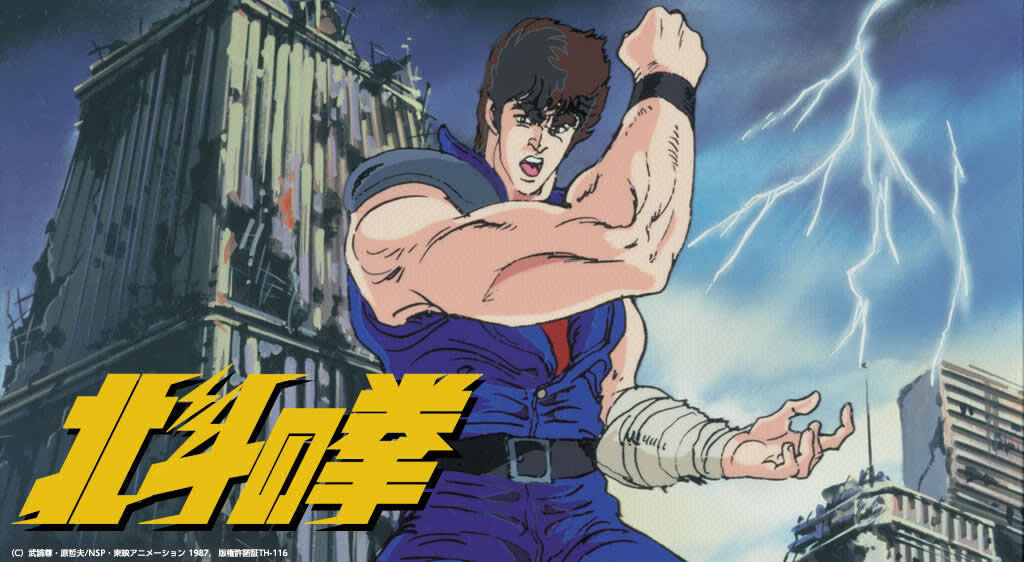
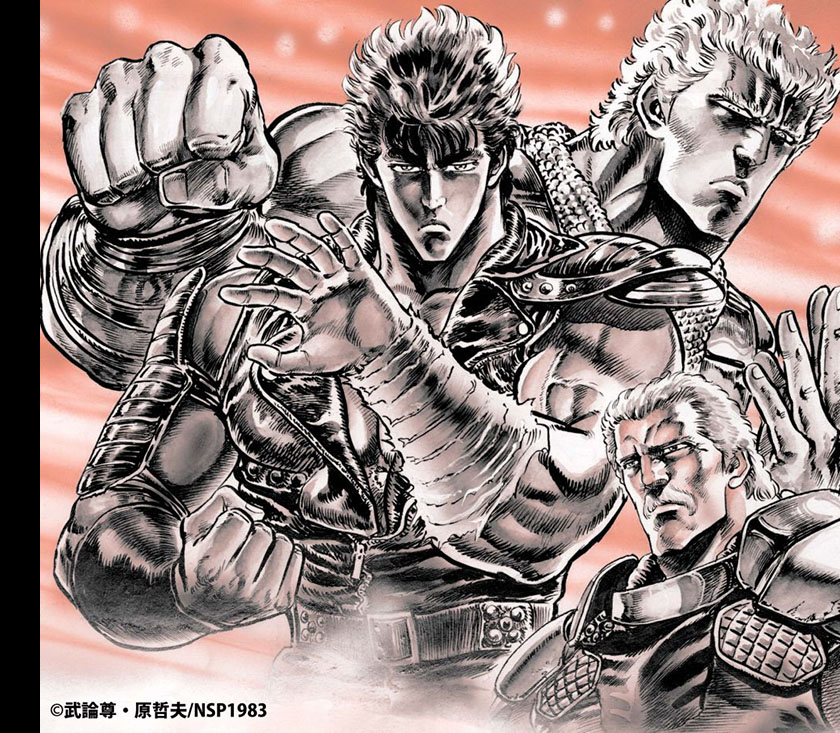
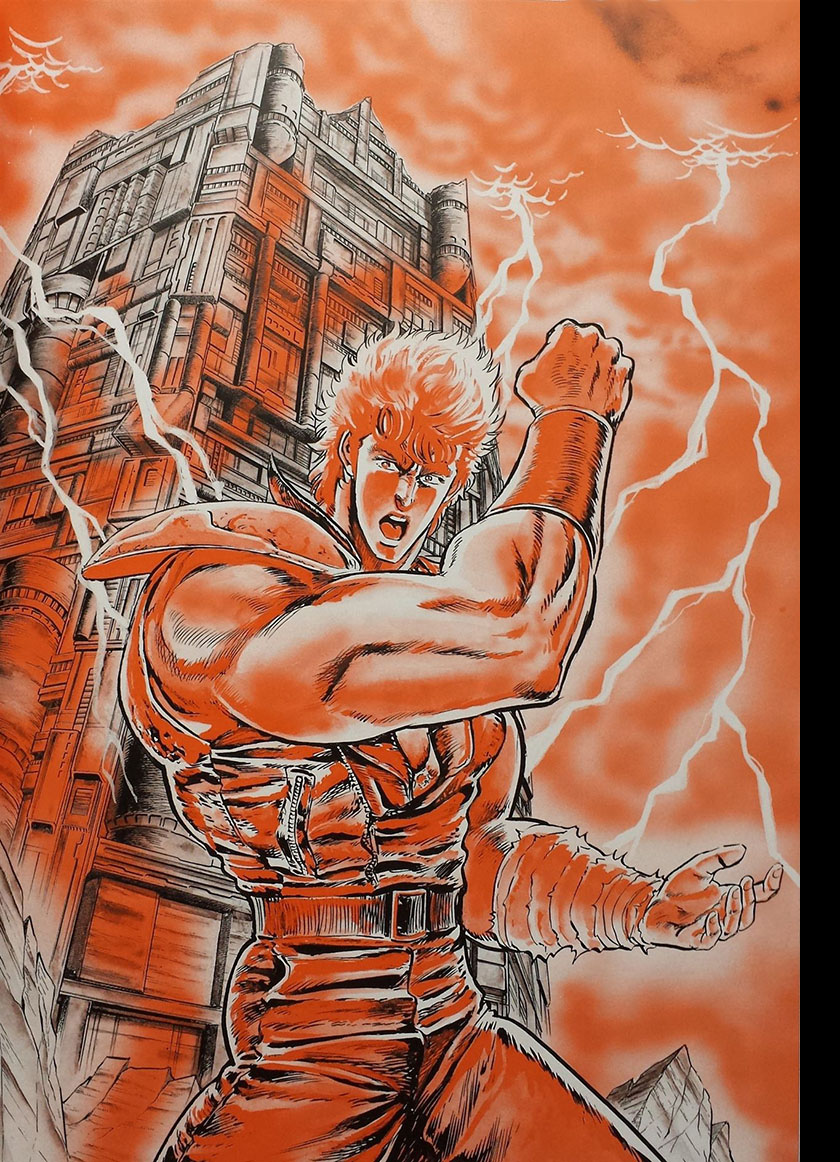
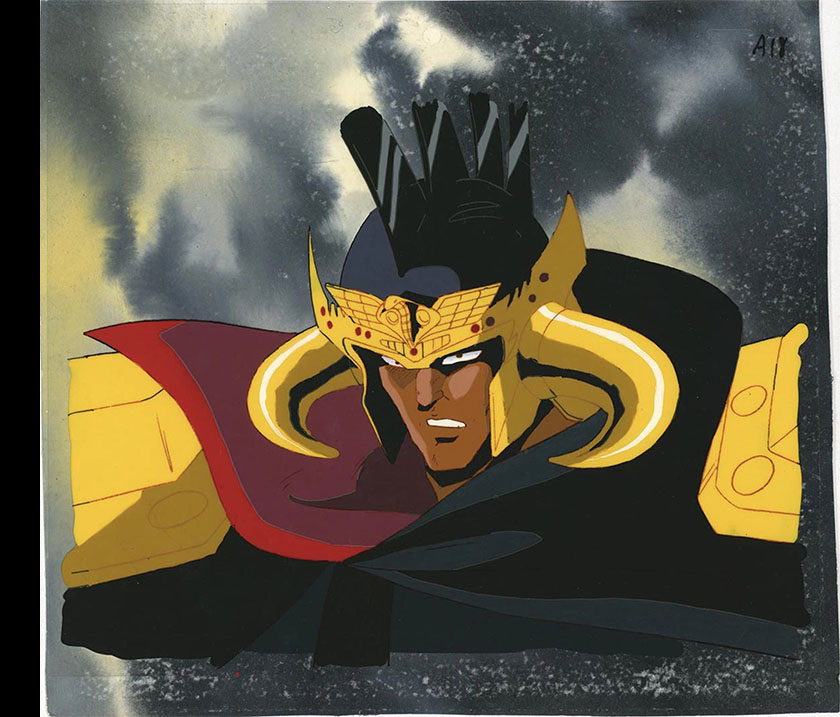
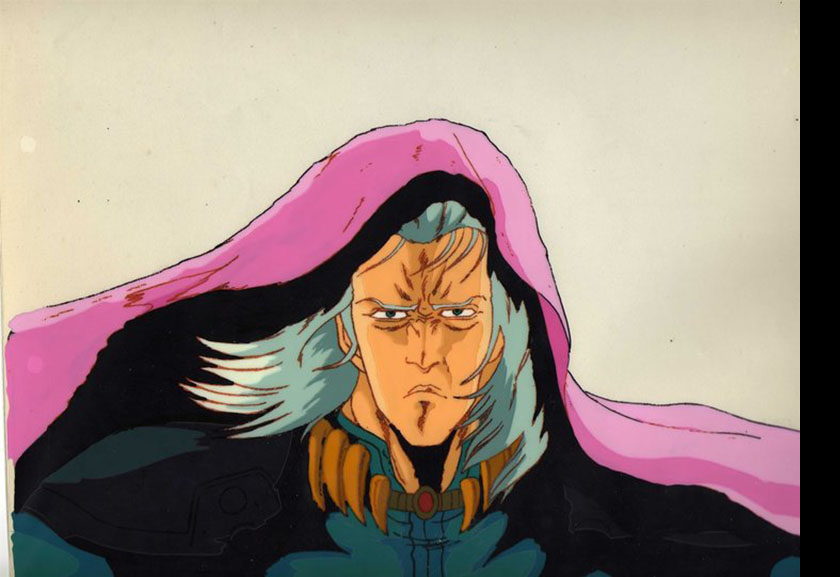
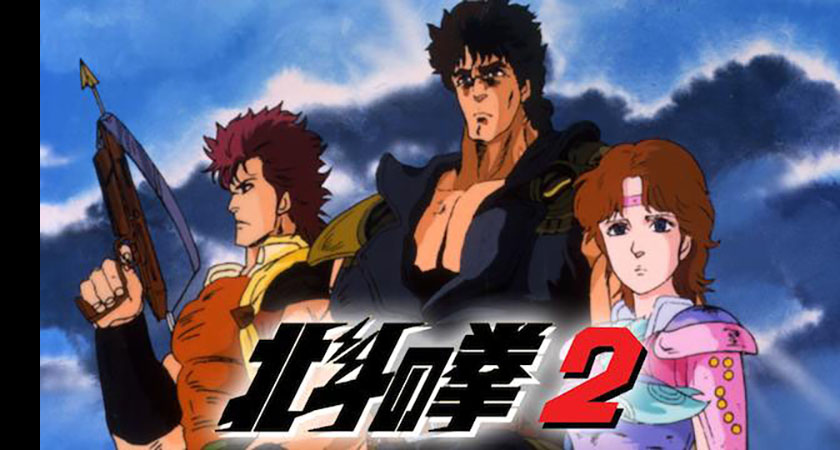

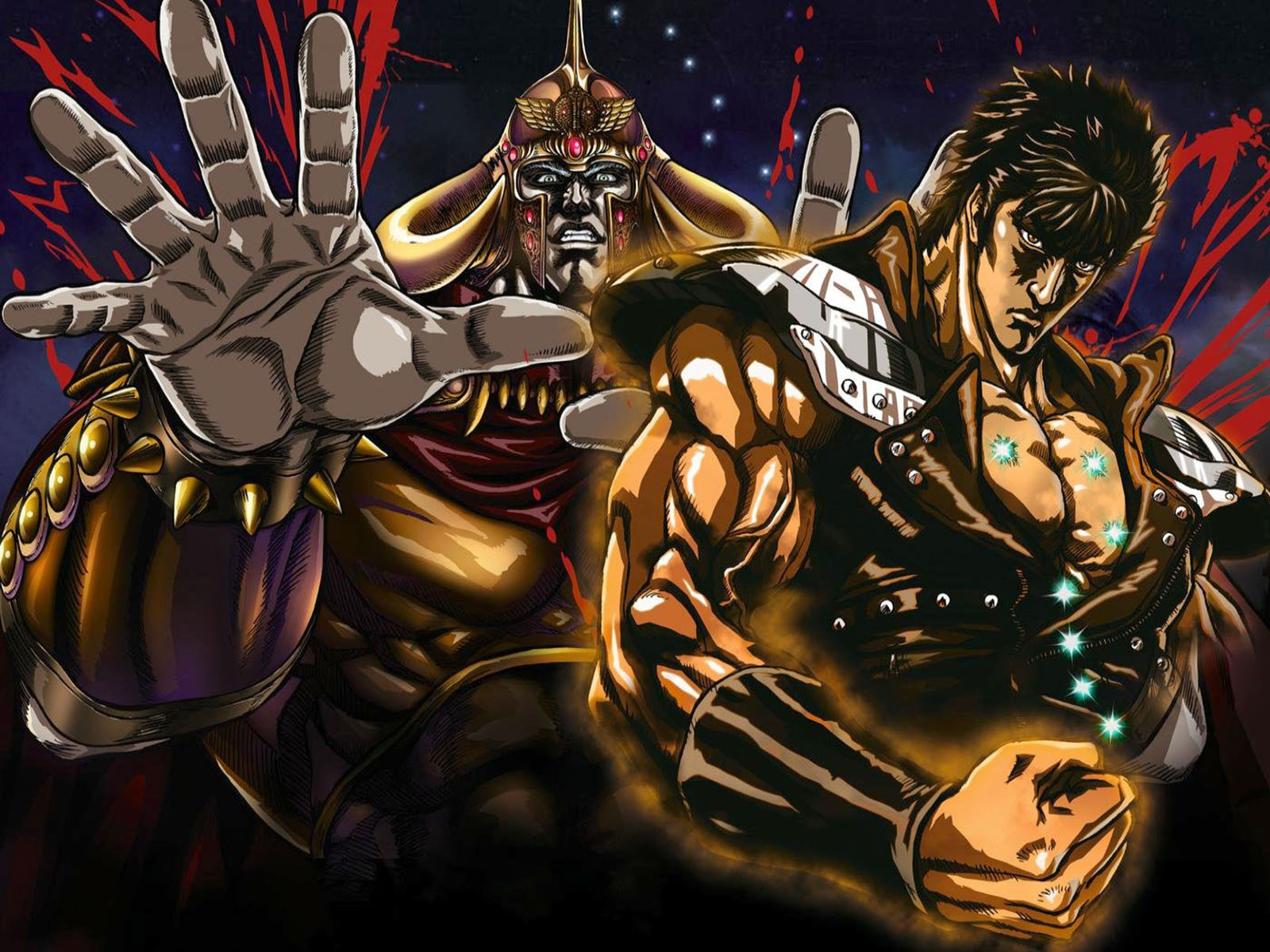
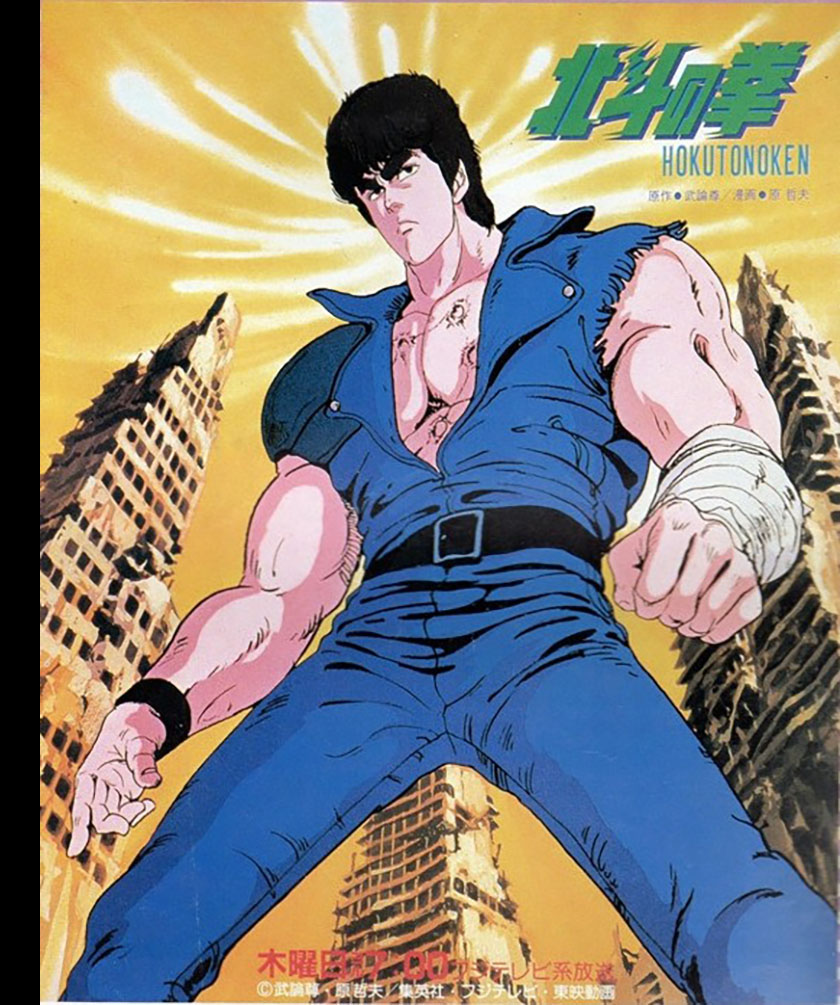
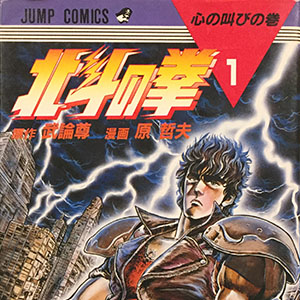
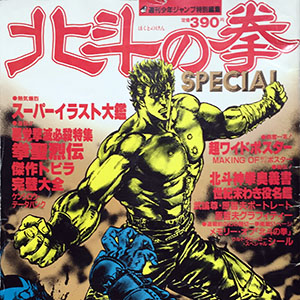
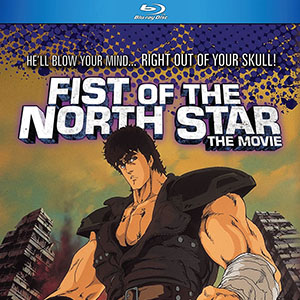
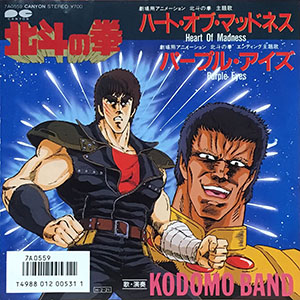

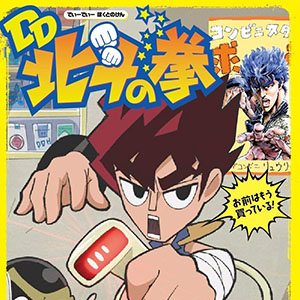
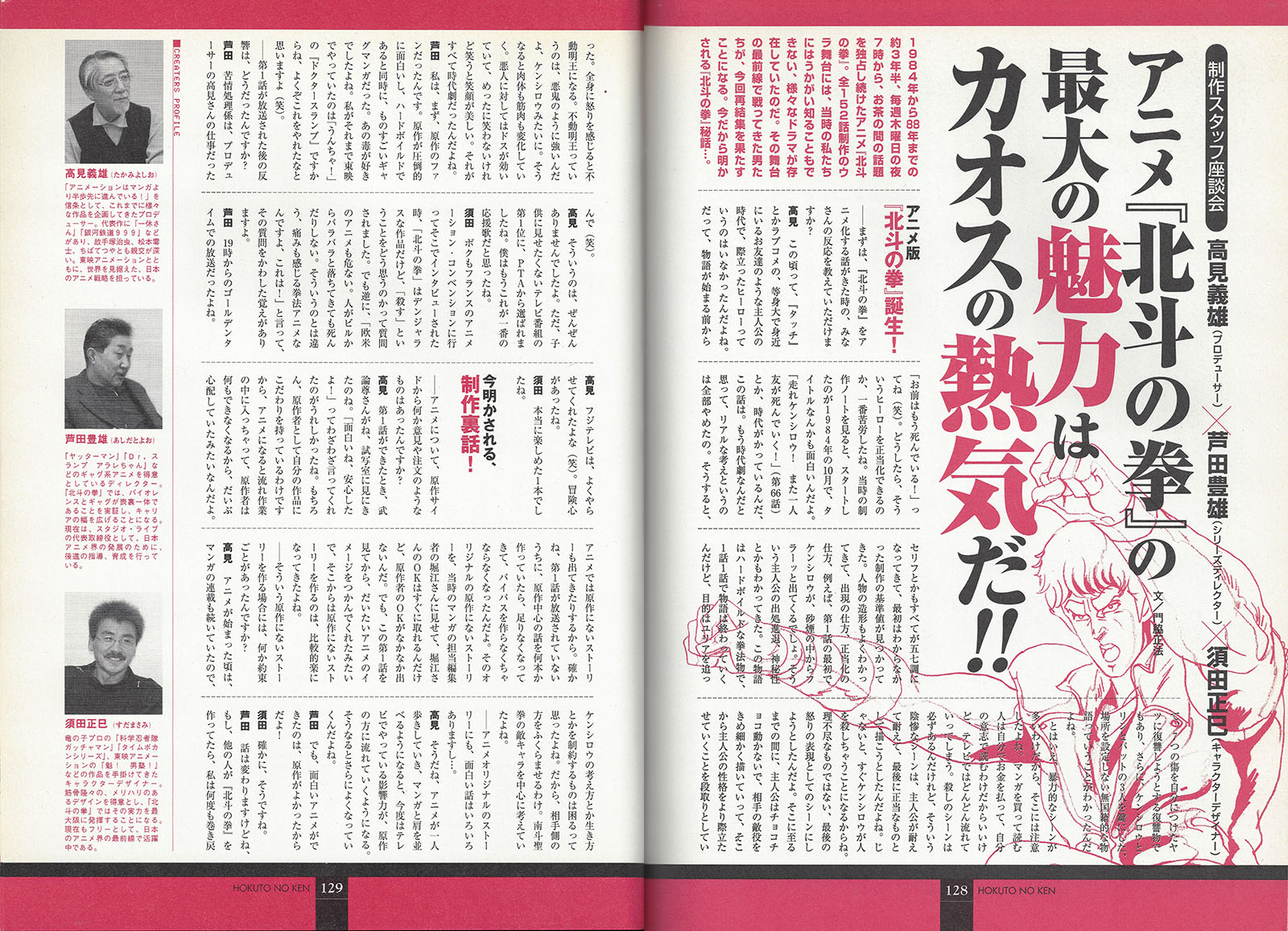
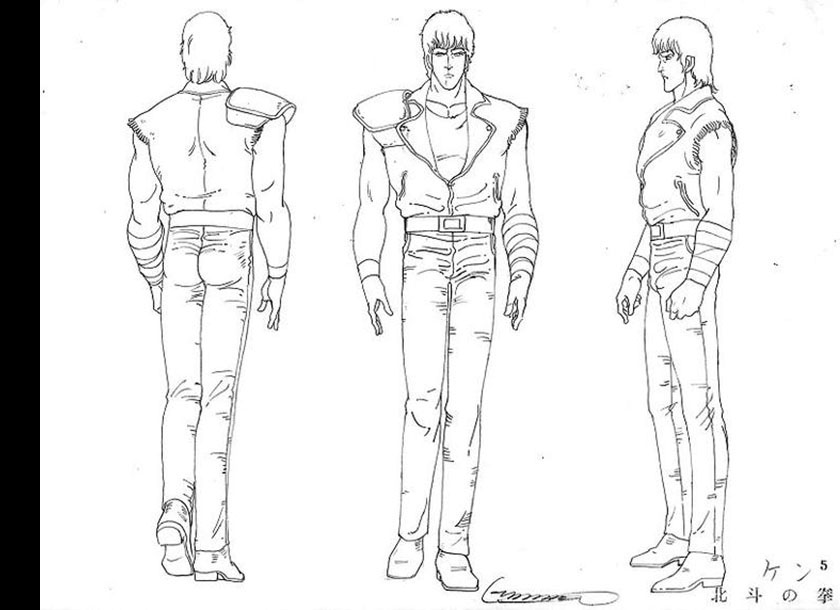
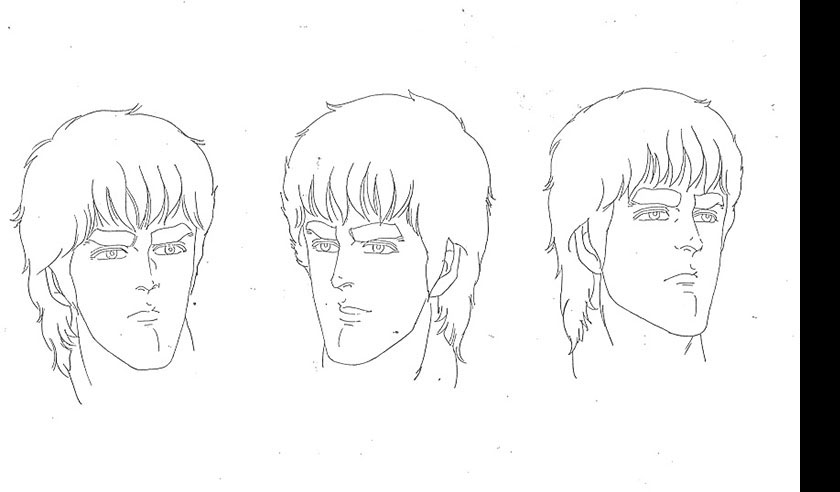
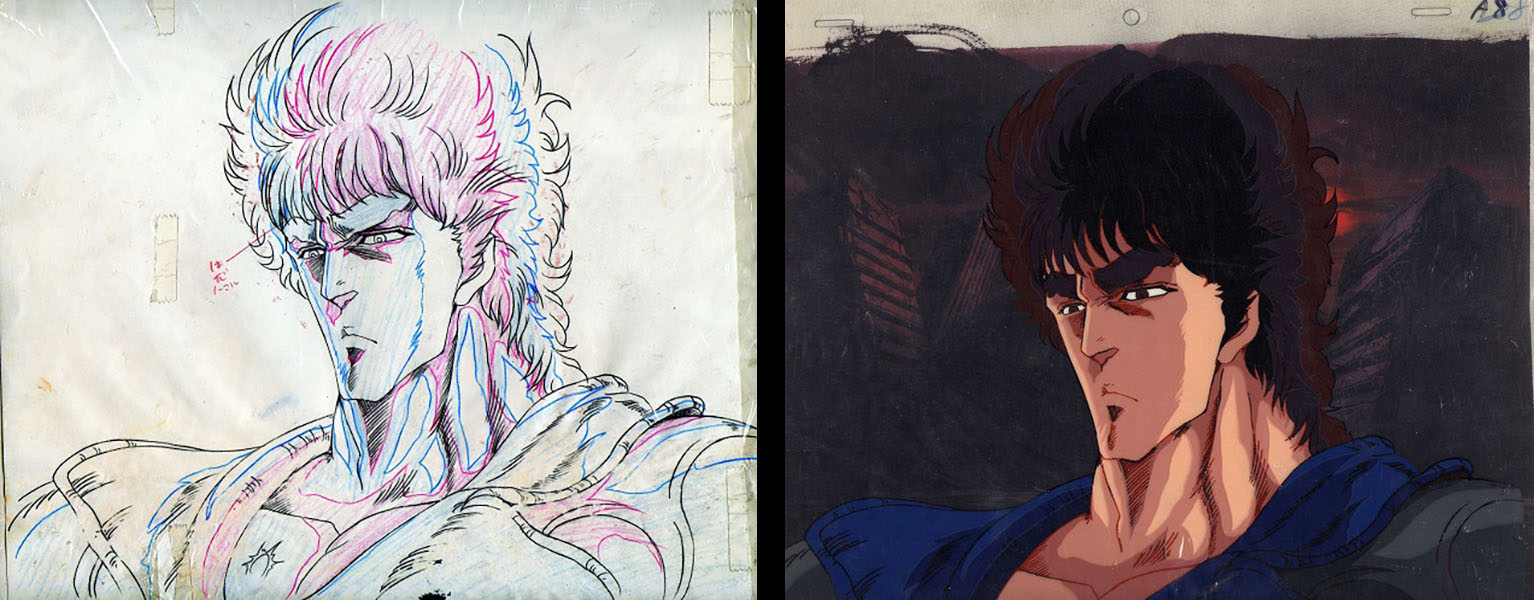
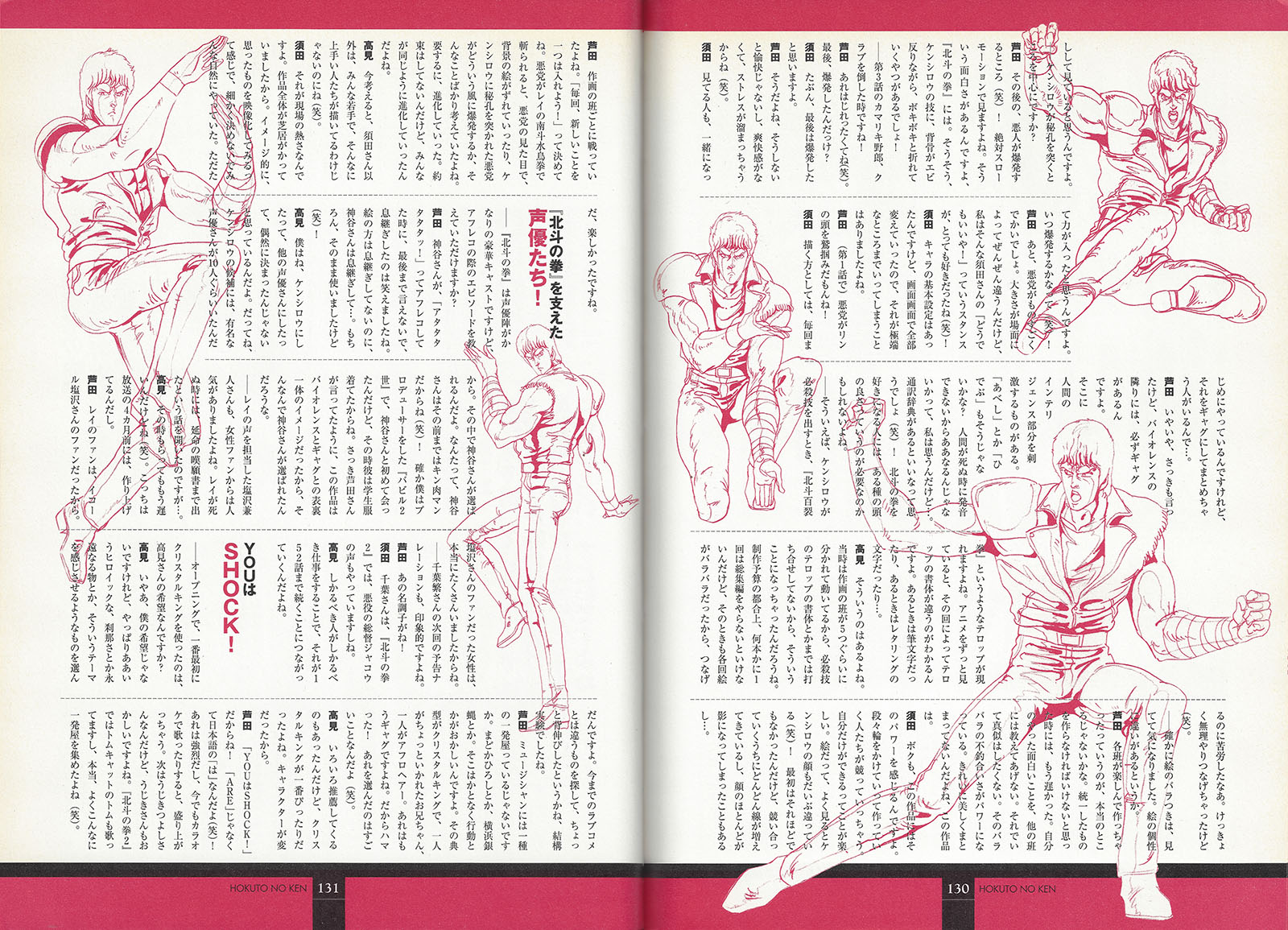
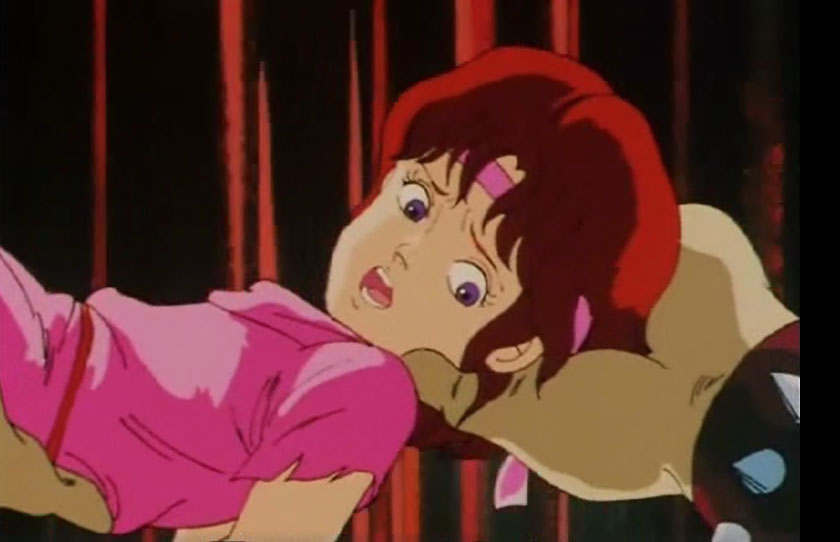
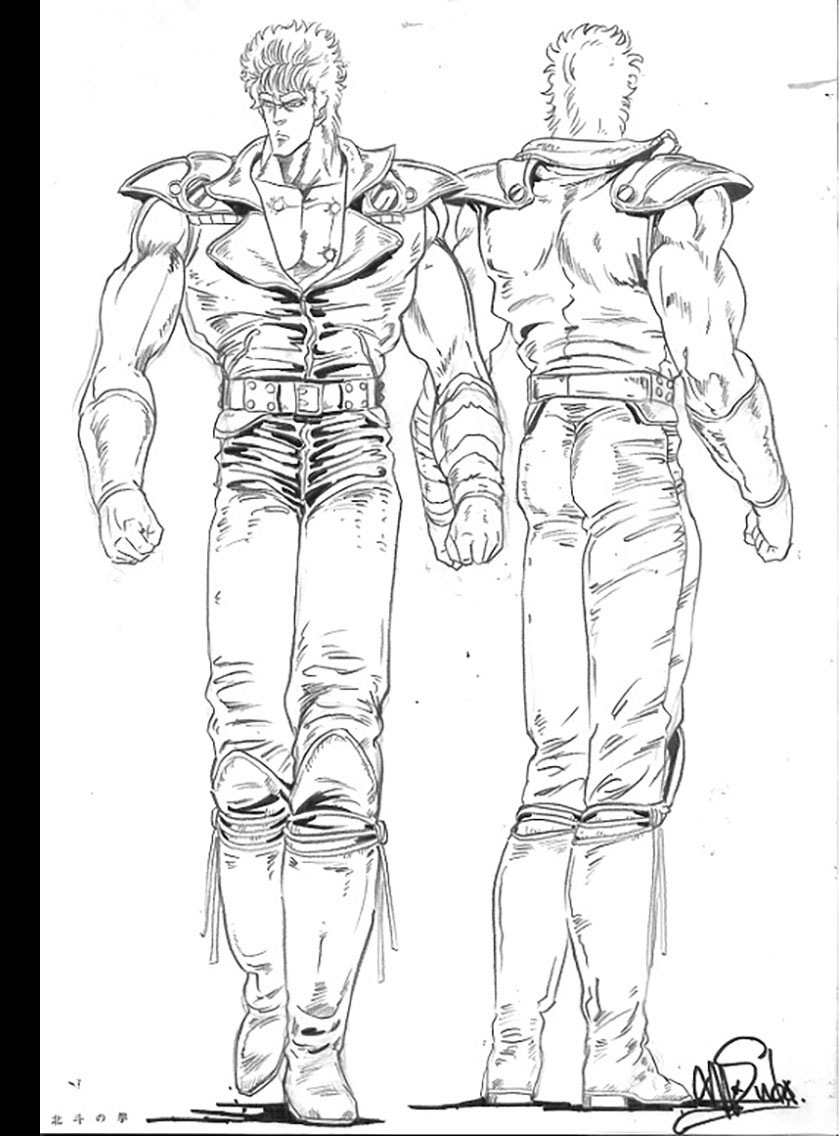
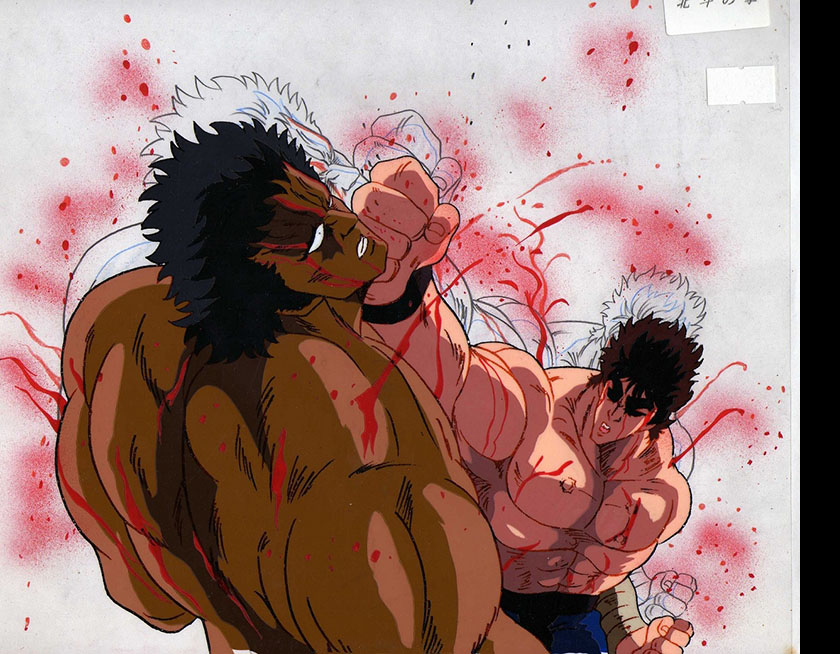
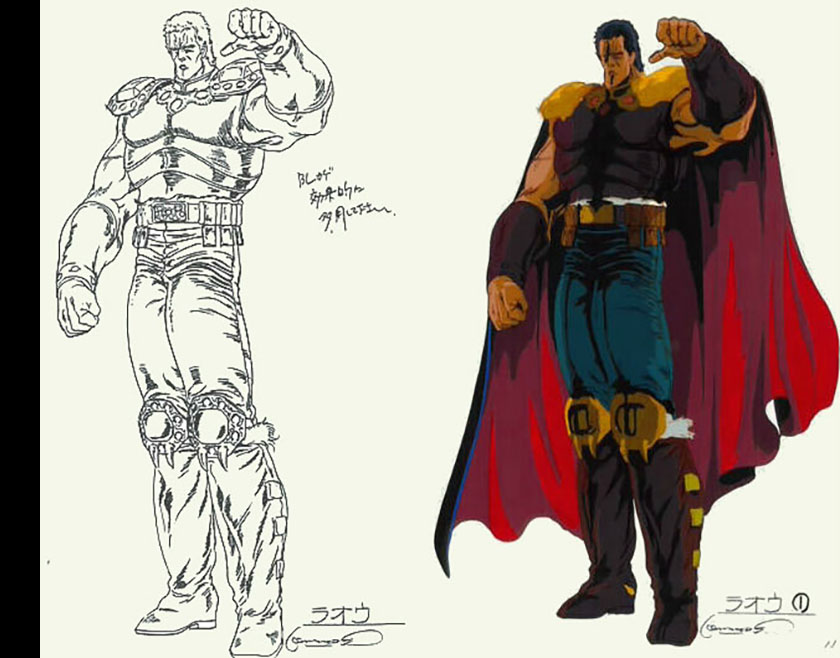
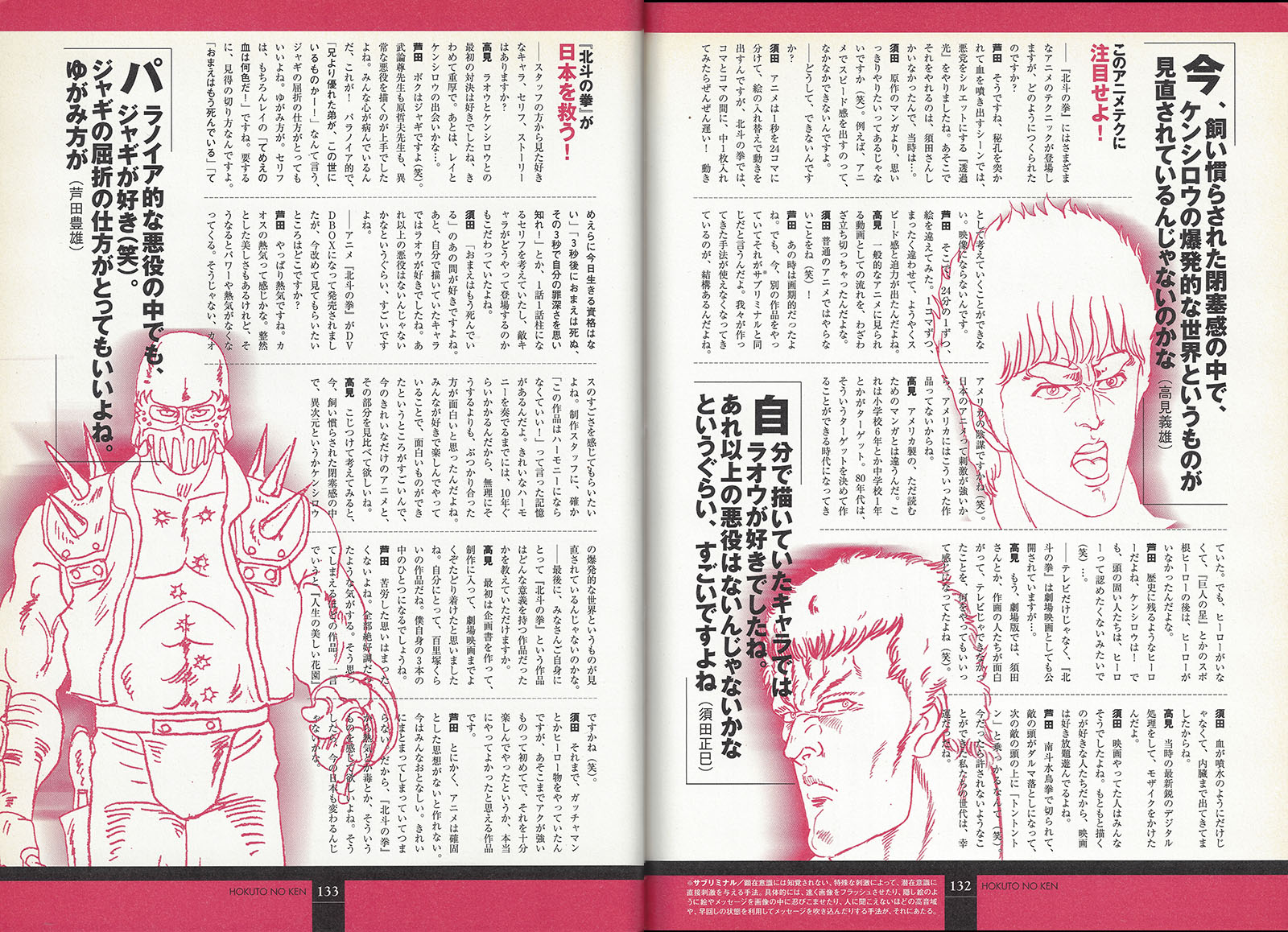
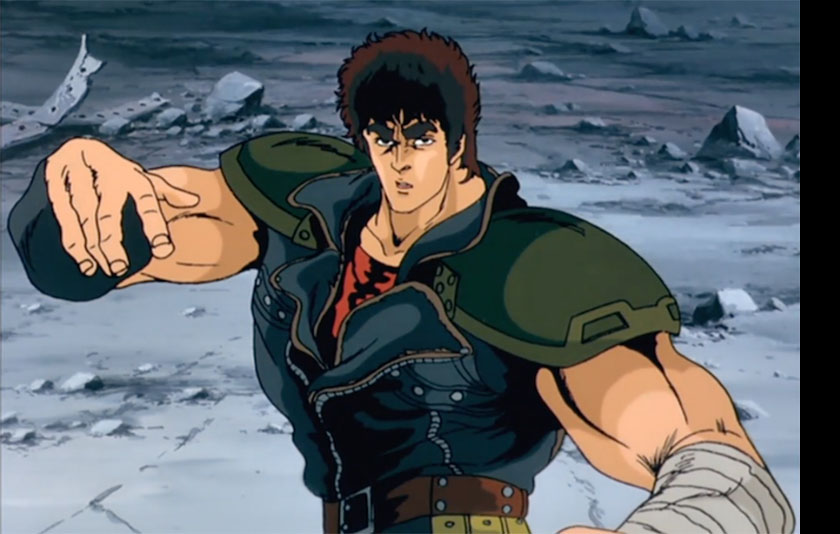
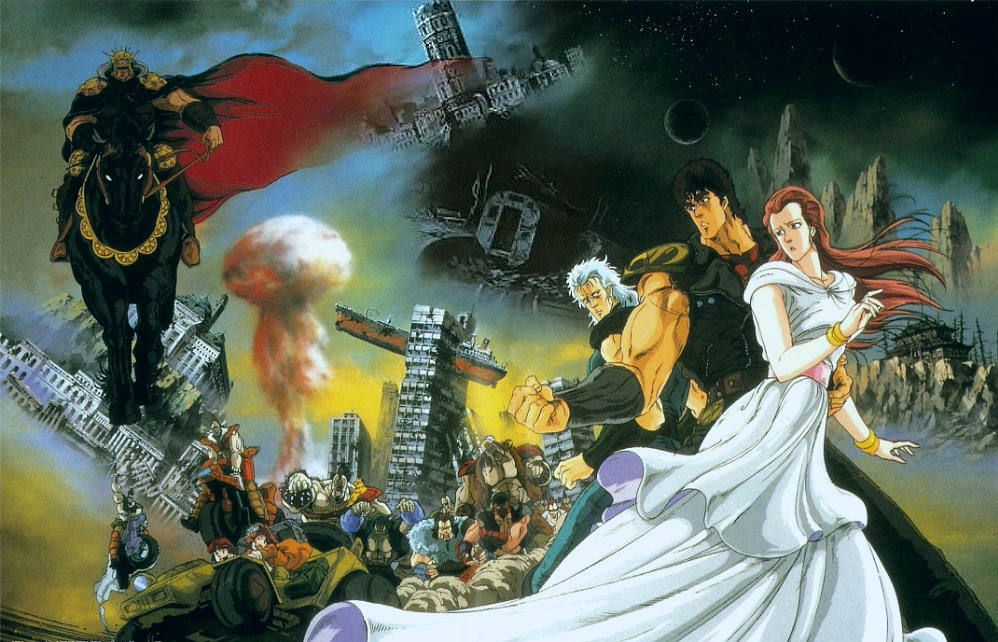
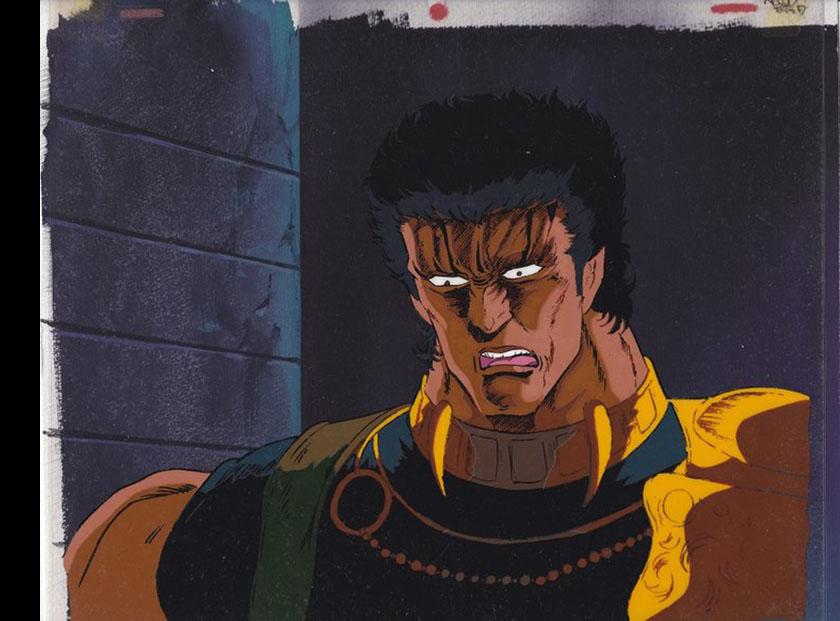
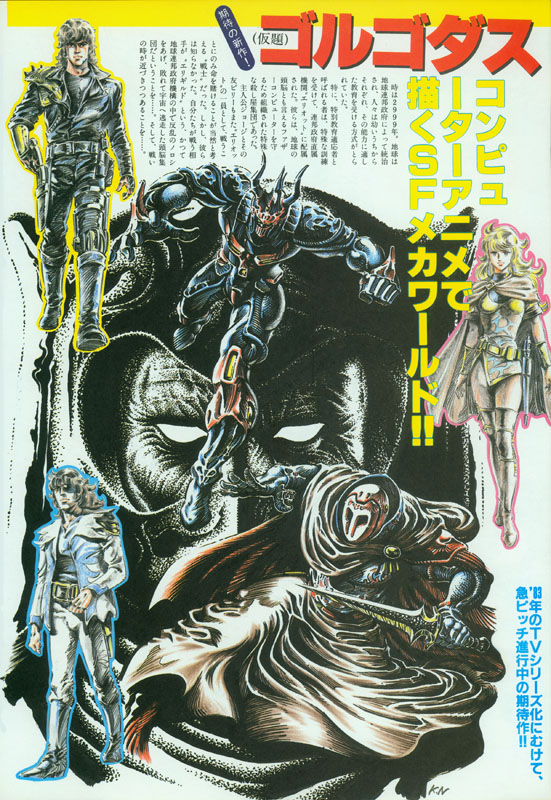
Warner Bros. Japan is developing a new anime, “Fist of the North Star: Hokuto no Ken” in celebration of the 40th anniversary of the series. Further details are cryptic, but modern technology and animation will be used in this venture.